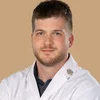Diabetology
Diabetology is a medical discipline dealing with the prevention and treatment of diabetes mellitus and its associated complications. Diabetes is a disorder of carbohydrate metabolism that is caused by a lack of a hormone called insulin produced by the pancreas, or by the body’s insensitivity to insulin (insulin resistance), or both. In the absence of sufficient insulin, the cells are unable to take up glucose, which raises blood sugar levels. Together, they cause the main symptoms.

